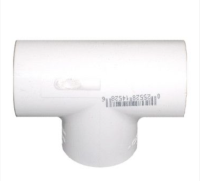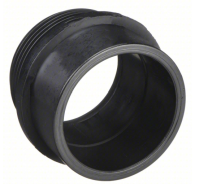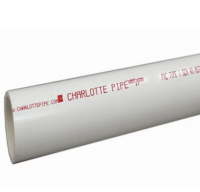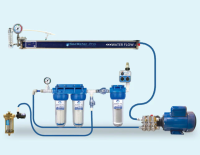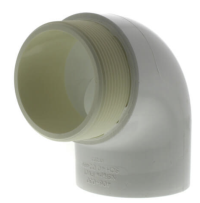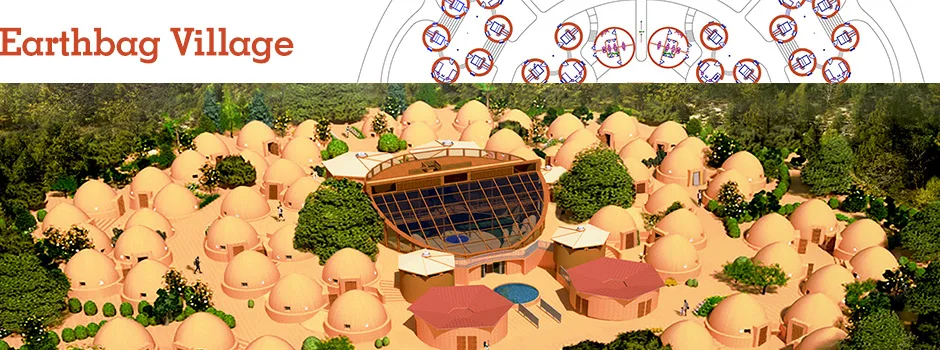
Earthbag Village Tools and Equipment
This page is the open source and free-shared Earthbag home and village construction tools and equipment needs page that will evolve with the open source project-launch blueprinting of the One Community Earthbag Village (Pod 1). The goal of this page is to provide precise tool and equipment needs for every component of the Earthbag Village.
We discuss these areas with the following sections:
- Earthbag Village Tool & Equipment Needs
- Tool and Equipment Needs for Building 1 Dome or a 3-Dome Cluster
- Tool and Equipment Needs for the Net-zero Bathroom
- Tool and Equipment Needs for the Vermiculture Toilets
- Tool and Equipment Needs for the Communal Eco-showers
- Tool and Equipment Needs for the Tropical Atrium
- Tool and Equipment Needs for the Complete Earthbag Village
- Resources
- Summary
- FAQ
This page will continue to evolve until building the Earthbag Village is complete and we can definitively say exactly what tools and equipment were used for every aspect of our build – and how different tools and equipment affected our build. After that, we will further evolve this page with the help and data from those around the world building additional Earthbag teacher/demonstration communities, villages, and cities using our blueprints.
RELATED PAGES
WAYS TO CONTRIBUTE TO EVOLVING THIS SUSTAINABILITY COMPONENT WITH US
SUGGESTIONS | CONSULTING | MEMBERSHIP |
EARTHBAG VILLAGE
TOOLS & EQUIPMENT NEEDS
![]() This page is specifically for the tools and equipment details of the Earthbag Village. As part of our global transformation approach to Highest Good housing, our goal is to continuously update this page with resources to make earthbag construction tools and equipment sourcing and acquisition as easy as possible. For details on the other aspects of the Earthbag Village (building plans, materials lists and cost analysis, time investment, etc.) visit the complete list of links on the EARTHBAG VILLAGE OPEN SOURCE HUB.
This page is specifically for the tools and equipment details of the Earthbag Village. As part of our global transformation approach to Highest Good housing, our goal is to continuously update this page with resources to make earthbag construction tools and equipment sourcing and acquisition as easy as possible. For details on the other aspects of the Earthbag Village (building plans, materials lists and cost analysis, time investment, etc.) visit the complete list of links on the EARTHBAG VILLAGE OPEN SOURCE HUB.
We’re sharing here the equipment needs divided into sections and also for the complete village. This is because each component is meant to be replicable as either an individual component or as the village. As we build the complete village we’ll continuously update this page until we are 100% clear on every tool needed to construct each of the following areas discussed here:
- Tool and Equipment Needs for Building 1 Dome or a 3-Dome Cluster
- Tool and Equipment Needs for the Net-zero Bathroom
- Tool and Equipment Needs for the Vermiculture Toilets
- Tool and Equipment Needs for the Communal Eco-showers
- Tool and Equipment Needs for the Tropical Atrium
- Tool and Equipment Needs for the Complete Earthbag Village
Note: We are currently seeking companies that would like to partner with our 501(c)3 non-profit organization to provide direct and affordable consumer bulk tool and equipment purchases. Our goal is to reduce consumer prices while increasing the profit margin for companies because the orders will be large and direct. We feel this will make duplication of all 7 sustainable village models even easier. Visit our Win-Win-Win-Win page to understand our partnering philosophy and our Marketing and Promotional Engine Page for the specifics on additional ways we can support those interested in being a part of world change with One Community.
TOOL & EQUIPMENT NEEDS FOR
1 DOME OR A 3-DOME CLUSTER
 Here are the equipment purchasing needs for a team of ten people purposed for maximum efficiency and preparedness when building a complete dome home or 3-dome cluster. For an individual home some of these items could be rented or borrowed to make building more cost effective.
Here are the equipment purchasing needs for a team of ten people purposed for maximum efficiency and preparedness when building a complete dome home or 3-dome cluster. For an individual home some of these items could be rented or borrowed to make building more cost effective.

Tool and Equipment Needs for a 1 or 3-Dome Build ” Click for the open source spreadsheet with the most current data
TOOLS AND MATERIALS
 When undertaking a project and acquiring tools and materials seek out those that best fit your situation. Quality of tools generally correlates with price, but thorough research can save you money if you have the time. What works for us, may not necessarily work for you, but in many cases it will. We share our list here with the hope that it will act as a useful guide for saving you time, money, and frustration. To fully engage in this action, the following tools and materials are our suggestions. If you find a better substitute, please let us know.
When undertaking a project and acquiring tools and materials seek out those that best fit your situation. Quality of tools generally correlates with price, but thorough research can save you money if you have the time. What works for us, may not necessarily work for you, but in many cases it will. We share our list here with the hope that it will act as a useful guide for saving you time, money, and frustration. To fully engage in this action, the following tools and materials are our suggestions. If you find a better substitute, please let us know.
- 2-Gallon Metal/Plastic Buckets
- 4-Gallon Plastic Bucket
- 4-Point, 12.5 Gauge Galvanized Barbed Wire
- 6 Mil Polyethylene Plastic
- 15 Gauge Wire or 16d Nails
- Bailing Twine
- Concrete Sealer
- Extension Handle
- Geotextile Fabric
- Gravel And Rocks 2-6″ Rock
- Gravel And Rocks Washed Local River Jacks, 2-4″
- Gravel And Rocks Washed ¾ River Gravel, ¼”-1″
- Gravel And Rocks #2 River Gravel, ¾-2 ½”
- Gravel And Rocks ½” Washed Pea Gravel
- Gravel And Rocks Various Scoria Sizes
- Leather Gloves
- Level
- McLeod
- One Rounded Wooden Stake/Steel Pole
- Paint Roller Handle And ⅜” Nap Roller For Concrete Sealer
- Paint Brush
- Paint Tray And Liner
- Polypropylene Bags
- Pulaski
- Sabre Saw, sawzall
- Rounded Shovels
- Slider
- Soil Mixture Of Sand And Clay
- Spade
- Squared Off Shovel
- Tamper
- Tape Measure
- Utility Broom For Concrete Finishing
- Utility Knife
- Water For Misting Soil Mix
- Welded Wire Fabric (6x6x10x10 ” 6″x 6″ And Made Of 10 Gauge Wire)
- Wheelbarrow
- Wire Cutters/Fencing/Linesman Pliers
HERE ARE PICTURES AND DESCRIPTIONS TO HELP YOU
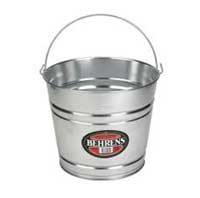 | 2-gallon metal/plastic buckets – 2-gallon buckets are a convenient-sized bucket used to fill earthbags. The metal buckets might be preferable for handle durability. |
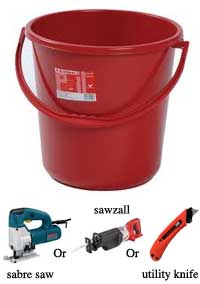 | 4-gallon plastic bucket – A 4-gallon bucket with the bottom cut out works well as a funnel in filling earthbags. If you have a sabre saw or a sawzall, it is very easy to remove the bottom of a plastic bucket, converting it into a funnel for easily filling bags with gravel or soil. A utility knife can be used though and is much less expensive, just more difficult but still completes the task. |
 | 4-point, 12.5 gauge galvanized barbed wire – 12.5 gauge, 4-point galvanized barbed wire on the left and a roll of polypropylene bags on the right. Set on a suspended rod, this provides easy access for both materials. These are two of the four critical elements of earthbag construction infrastructure, the others are the earth mixture of sand and clay that go inside the bags and the plaster/stucco exterior. |
 | 6 mil polyethylene plastic – Plastic Sheeting comes in a wide range of thicknesses. It is rated with the term, “mil.” A mil is a measurement that equals one-thousandth of an inch, or 0.001 inch. Most human hair is one-thousandth of inch, or 0.001 inch. The most common size in the thickness rating for plastic sheeting is 6 mil. This is 6-thousandths of an inch, or 0.006 inch. Generally, the thicker the plastic, the stronger it is. If it has string/scrim reinforcement, then the string within the plastic will give it added strength. Plastic sheeting comes in different thicknesses, 6-mil the most common. If you have radon in your area you may want to consider the 20-mil as an underlayment for your floor. Click on the links below to select the thickness that will best serve your project. We have decided on 10 mil black poly due to the additional strength over the standard 6 mil.
|
 | 15 gauge wire – 15 gauge wire for securing earthbags tops OR 16d nails (16 penny nail, common) for securing earthbag tops |
 | Bailing twine – Twine is used for securing courses of bags together and to enhance the cohesive aspect of the plaster/stucco. |
 | Concrete sealerConcrete sealer – Concrete sealer for dome floor. |
 | Extension handle – Extension handle for nap roller. |
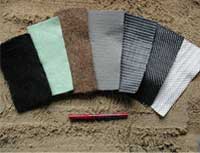 | Geotextile fabric – There are numerous variations of geotextile used for keeping soil out of rock trenches, enhancing the drainage. Geotextiles are permeable fabrics which, when used in association with soil, have the ability to separate, filter, reinforce, protect, or drain. For our purpose, the textile fabric prevents soil from permeating the gravel and rocks. Typically made from polypropylene or polyester, geotextile fabrics come in three basic forms: woven (resembling mail bag sacking), needle punched (resembling felt), or heat bonded (resembling ironed felt). |
 | Gravel and rocks 2-6″ rock – This is rock we would consider for the footings, at the bottom of the trench, it would negate the use of a French drain, mixing in smaller ¾” and tamping well, before using a ¾” washed gravel on top of this. |
 | Gravel and rocks Washed local river jacks, 2-4″ – This rock can be used as a transition layer between the larger 4″-6″ & the ¾” river gravel, but is not absolutely essential. The transition is possible without it, if you use more of this, you would use less of the ¾”. |
 | Gravel and rocks Washed ¾ river gravel, ¼”-1″ – We will utilize this at the top of the footers and lay our first course of earthbags over this relatively smooth gravel. Before setting the bags it is tamped well to attain a smooth level foundation. |
 | Gravel and rocks #2 River gravel, ¾-2 ½” – This is slightly larger and not as smooth but can still be used under the first course of earthbags. |
 | Gravel and rocks ½” washed pea gravel – used for base material under the dome slab. |
 | Gravel and Rocks Various Scoria Sizes – that which is often used in foundation earthbags for both drainage and insulation. these were also referred to as “cinders,” used in the winter on highways for traction. Scoria, commonly called lava rock, is very lightweight volcanic rock containing many air pockets, thus the insulative value. |
 | Leather Gloves – will help prevent blisters when frequently using hand tools for extended periods of time. |
 | Level – Here is one of many variations of the common level, used for leveling the earth bag courses and making certain the walls are plumb. |
 | The McLeod – another wildland firefighting tool and commonly used in trail restoration that can also be used to pull soil, gravel, and rock from one position to another, centralizing piles, and cutting roots. |
 | One Rounded Wooden Stake/Steel Pole – Wooden stakes on the left, and 2″ diameter schedule 40 black pipe on the right, either of which can be used for establishing the center point of domes. One length of any-sized twine and the rounded stake/black pipe will also be used as a guide for maintaining the curvature of the dome. |
 | Paint Roller Handle And ⅜” Nap Roller For Concrete Sealer – A paint roller is a paint application tool used for painting large flat surfaces rapidly and efficiently. |
 | 4″ bristle brush – for concrete sealer “cut in” (that which cannot be accomplished with a roller). |
 | Paint Tray And Liner – for concrete sealer. |
 | Polypropylene Bags – used to hold the earth mixture. They are purchased used or new. If you have the need, you can purchase larger quantities by the roll. The most common-sized earthbag is 18″ x 30″, empty. UV treated bags are preferable, but even those will break down if left exposed to the sun. Keep them covered as much as possible during the building phase. |
 | Pulaski – an exceptional, versatile digging & cutting tool that is a great addition for any manual digging project. Highly regarded among wildland firefighters, it is working its way into the construction labor force. As with this tool and other wooden handled tools, they are subject to breakage, therefore the fiberglass handled tools are increasingly selected due to their longevity. One end has a dual function with an axe blade and the other side a grubbing hoe. Once you learn how to properly use a Pulaski, you will constantly rely on this tool for most any manual digging project. |
| | Rounded Shovels – is a good overall digging shovel and for loosening the soil. |
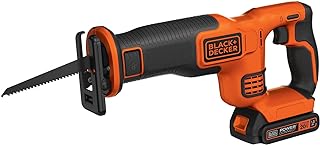 | Sabre Saw, sawzall – The sabre saw uses a toothed blade, chiefly to cut through wood and other soft materials. |
 | Slider – Two versions of a metal slider, which aid in keeping the earthbags in their proper position and intact when positioning them on barbed wire. The one on the top has a smooth surface and the addition of a 2″x 2″ piece of wood (similar to that shown but smaller) snugged and bolted in place at the 90 degree angle of the slider would make this a perfect tool. The one on the bottom is simply a scrap piece of metal with a set of vice grips acting as a handle, the sharp-edged metal on the second example could tear the poly bags, but it will still work, it’s just not ideal. |
 | Soil Mixture Of Sand And Clay – The soil mix for earthbags is dependent upon the level of clay already existing in the soil. With sandy soils, the goal is 10-15% small stones and gravel, 80-90% coarse and fine sand (with angular granules to enhance cohesion), and 5-10% cement. Lime can be used for sandy soils with some clay and the goal is then 10-15% small stones and gravel, 40-80% coarse and fine sand, 5-20% clay, and 10-20% lime. In the case of soils with large amounts of clay the goal is 10-15% small stones and gravel, 40-80% coarse and fine sand, 20-40% clay, and 10-20% lime. |
 | Spade – The spade is best suited for narrow trenches, slightly widening an existing trench, or digging small post-sized holes. |
 | Squared Off Shovel – The squared off shovel is best for cleaning out the trenches once the soil has been loosened by a pulaski, spade, or rounded shovel. |
 | Tamper -will see constant use for compacting and leveling of gravel, soil, and earthbags throughout your project. A gas or electric tamper can also be rented or purchased for larger projects. |
 | Tape Measure – will be used throughout the project, on the opposite side of most of these, there is a clip that connects to your belt, to keep it close by. Some people prefer a brighter color because it can help to more quickly find this frequently used accessory. For this reason, many tape measures are now manufactured in bright fluorescent colors. |
 | Utility Broom For Concrete Finishing – Utility broom used to apply a non-skid finish on a concrete floor. |
 | Utility Knife – A utility knife is any type of knife used for general manual work purposes. Such knives were originally fixed-blade knives with durable cutting edges suitable for rough work such as cutting cordage, cutting/scraping hides, butchering animals, cleaning fish scales, reshaping timber, and other tasks. |
 | Water For Misting Soil Mix – Water is an important ingredient in mixing the earthbag contents so they hold firmly together. Do not add too much water to the point that it oozes out when tamping. It is generally considered that water of potable quality should be used to mix mortars, cements, and plasters, it won’t hurt to use it with your earthbag mix either. The pH should not be less than 6. Dissolved salts and minerals should be as low as possible. |
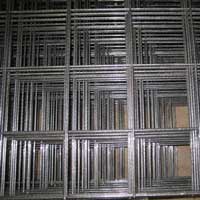 | Welded Wire Fabric (6x6x10x10 ” 6″x 6″ And Made Of 10 Gauge Wire) – This is a 6″ x 6″ wire mesh made with 10-gauge wire running both directions. It is laid over the EPS (extruded polystyrene) insulation and elevated 1 ½-2 inches so it is positioned in the lower to mid portion of the 4″ concrete pour, thereby maximizing the strength of the concrete. |
 | Wheelbarrow – Wheelbarrows come in both metal and plastic, with a single or double front wheel and with different cubic foot carrying capacities. The single front wheel is more easily maneuverable but the double front wheel has more stability. The tires also come as solid or inflatable. Solid tires will last longer but they are typically more expensive. |
 | Wire Cutters/Fencing/Linesman Pliers – Wirecutters (fencing pliers/linesman pliers) are essential for cutting barbed wire. |
TOOL & EQUIPMENT NEEDS FOR
THE NET-ZERO BATHROOM
Content coming…
TOOLS AND MATERIALS
content coming…
HERE ARE PICTURES AND DESCRIPTIONS TO HELP YOU
Descriptions coming…
IF YOU’D LIKE TO HELP, CONSIDER THESE OPTIONS
SUGGESTIONS | CONSULTING | MEMBERSHIP | OTHER OPTIONS
- 2 in. Spigot X 3/4 in. Reducing Bushing
- 3 in. PVC Bulkhead Fitting
- 3 in. Schedule 40 PVC Cross
- 3 in. Schedule 40 PVC Tee
- Advanced Downspout Filter
- Alkaline and UV System
- Ball Valve
- Cistern
- Downspout Filter
- Gutter Guard
- High Flow Water Filtration System
- Male Adapter Schedule 40
- Male Spigot Schedule 40
- PVC Flexible Coupling
- PVC Spigot Kit
- Rainwater Integrated Filtration Unit
- Return Bend PVC Pipe
- Schedule 40 PVC Pipe
- Screen Vent
- Single Membrane Water Maker
- Street Elbow Schedule 40
- Water Filter System
- Water Pump
- Water Storage Tank
- Well Water UV Filtration System
Tools & equipment needs and costs are still being determined for this component. Visit the Net-zero Bathroom open source hub for more information on this structure.
TOOL & EQUIPMENT NEEDS FOR
THE VERMICULTURE TOILET
Tools & equipment needs and costs are still being determined for this component. Visit the Vermiculture Toilet open source hub for more information on this structure.
TOOL & EQUIPMENT NEEDS FOR
THE COMMUNAL ECO-SHOWER
Tools & equipment needs and costs are still being determined for this component. Visit the Communal Eco-shower page for more information on this structure.
TOOL & EQUIPMENT NEEDS FOR
THE TROPICAL ATRIUM
Tools & equipment needs and costs are still being determined for this component. Visit the Tropical Atrium open source hub for more information on this structure.
TOOL & EQUIPMENT NEEDS FOR
BUILDING THE COMPLETE VILLAGE
 Here is the detailed inventory of all tools and equipment needed for four teams of 10 to build (click here for time investment projections) the entire Earthbag Village and all of its components. We will engage this list as an on-going process of updating and refining until the entire build is complete, inventorying every tool and piece of equipment needed for each component of the build, so that when we are complete we can give a definitive and final tools and equipment analysis and cost spreadsheet for each component and the whole build, along with where the best places were that we found for purchasing everything.
Here is the detailed inventory of all tools and equipment needed for four teams of 10 to build (click here for time investment projections) the entire Earthbag Village and all of its components. We will engage this list as an on-going process of updating and refining until the entire build is complete, inventorying every tool and piece of equipment needed for each component of the build, so that when we are complete we can give a definitive and final tools and equipment analysis and cost spreadsheet for each component and the whole build, along with where the best places were that we found for purchasing everything.
So far this list includes:
- All equipment (plus backup equipment) to build the 75 domes and patios

Tool and Equipment Needs for Constructing a Complete Earthbag Village ” Click for the open source spreadsheet with the most current data
RESOURCES
- One Community: Earthbag Village Open Source Hub
- One Community: Earthbag Village Materials and Costs Page
- EarthbagBuilding.com ” an amazing wealth of earthbag building resources
- My Little Homestead YouTube Channel ” A great earthbag & sustainable building resource
- Hyperadobe ” Building using mesh earthbags (created by Fernando Pacheco of EcoOca in Brazil)
- CalEarth ” California Institute of Earth Art and Architecture (founded by Nader Khalili from Iran)
- Earthbag Building YouTube Channel
- Use this page (click here) if you have a resource you’d like to suggest be added here
SUMMARY
![]() The purpose of our organization is to make the building of self-propagating self-sufficient teacher/demonstration communities, villages, and cities as easy as possible. One aspect of this is clearly defining exactly what tools and equipment are needed for duplication of the complete Earthbag Village and also each of the major components within the village. This page is the results of our research and it will evolve with even more details as we build the Earthbag Village and identify through our experience the best tools and equipment to use, any tools and equipment we may not have accounted for, and ways or companies that can reduce the price for acquiring all needed tools and equipment. We will open source these details here as they evolve.
The purpose of our organization is to make the building of self-propagating self-sufficient teacher/demonstration communities, villages, and cities as easy as possible. One aspect of this is clearly defining exactly what tools and equipment are needed for duplication of the complete Earthbag Village and also each of the major components within the village. This page is the results of our research and it will evolve with even more details as we build the Earthbag Village and identify through our experience the best tools and equipment to use, any tools and equipment we may not have accounted for, and ways or companies that can reduce the price for acquiring all needed tools and equipment. We will open source these details here as they evolve.
FREQUENTLY ANSWERED QUESTIONS
Q: What is the purpose of the Earthbag Village?
Please see the complete Earthbag Village open source hub: Click Here
Q: I found a broken link or incorrect price on the spreadsheet, what should I do?
Until One Community actually builds the Earthbag Village, all Tools & Equipment spreadsheets/pages will only be periodically updated and checked for accuracy (if at all), as price data and website pages change very frequently. If you are looking to buy the product in question, you can simply Google the name of it to find it or a comparable product.
Q: How do you intend to keep track of all the tools and equipment for each component?
We will use the community project management software we are developing to log everything as it is used and appoint a Project Foreman to oversee and double check the details.
Q: How do you intend to help bring prices down to facilitate duplication of your models as teacher/demonstration villages?
We have a Win-Win-Win-Win partnering philosophy combined with a significant marketing and promotional engine that we feel brings value to any partnership. We are using these tools and resources to seek partners with the global distribution capability who see the free marketing and new and expanding customer base we will provide as beneficial enough to be willing to reduce their consumer prices and individual profit in favor of volume sales and supporting global change.
 One Community
One Community







